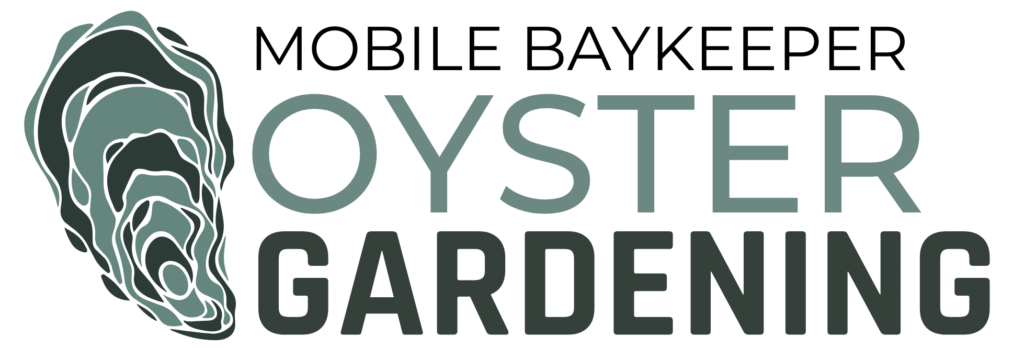The Eastern oyster (Crassostrea virginica) is an iconic food and cultural resource in the Mobile Bay. As an important indicator of the health of the Bay, oysters form reefs that provide habitat for other estuarine species, reduce long-term erosion of the shoreline, and filter pollutants from the water itself. A single oyster can remove harmful nitrogen and sediments from approximately ten gallons of water per day. Unfortunately, local populations of the Eastern oyster continue to dramatically decline due to both human and environmental impacts, and it is estimated that over 80% of Mobile Bay’s oyster populations have decreased since 1950 according to commercial landings data.

Last year, working under the guidance of Auburn University Marine Extension and Research Center’s Oyster Gardening Program, at Mobile Baykeeper, we joined numerous other partners on the ambitious endeavor to bring back the oysters of Mobile Bay. We returned approximately 40,000 mature oysters to Mobile Bay last year and hope to more than double that number this year. As we scale our oyster gardening efforts up, our goal is to deploy 500,000 oysters by 2027.
The oyster garden program grows young (spat-on-shell) oysters in basket-like containers that provide a place for oyster spat (baby oysters) to grow safely. Approximately 20 of these baskets are hung on a volunteer’s pier or dock, making an oyster “garden”. Each basket can grow approximately 1,000 oysters, which means that a garden has the potential to produce as many as 20,000 oysters each year. Oysters grow in cages over the course of six to nine months, starting in late May or early June, and are introduced as adults to larger reefs designated for restoration in late fall or winter each year.
Mobile Baykeeper staff does the work to place, maintain, and grow the oysters. This consists of bi-weekly maintenance during the growing season (June – December), where our staff assesses growing conditions, water quality, and cleans the oysters’ cages to remove biofouling (too much algae clogging up the baskets). Your pier is still usable by you and your guests throughout the growing season. We know many of you love eating Gulf oysters but for this program, eating oysters that are grown in your oyster garden is strictly prohibited due to regulation. These oysters are for restoration only.
For our program to succeed, we need sites that are close together (ideally next door!) and have high salinity. The higher the salinity the faster the oysters grow. This year we are focused on sites on the Bay side of Fort Morgan and Dauphin Island. In future years, as our program continues to expand, we will expand our geographic footprint with it.